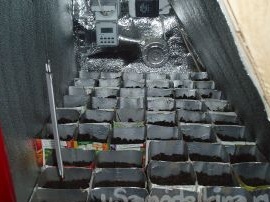
Now, when these lines are written, winter is outside. February in the yard. On the street - 25 and three-meter snowdrifts. And yesterday I harvested an extreme (yes, that is exactly the word here should stand) tomato crop. Want to try? Yes please!
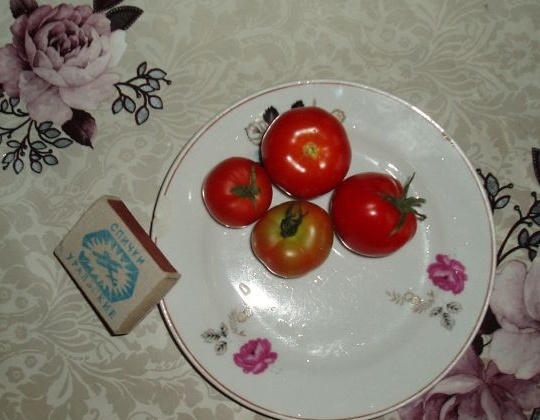
Well, jokes aside, especially since the tomatoes that I grew up are more likely not for food, but to answer the question of whether this is possible. Now I know that on 1 square meter in completely artificial lighting, without the use of fertilizers, it is possible to grow several kilograms of fresh tomatoes. It's nice, you know, once a week, in the winter, to bite a stack of fresh tomatoes ...
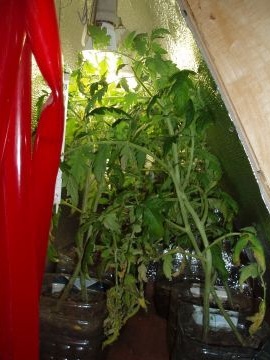
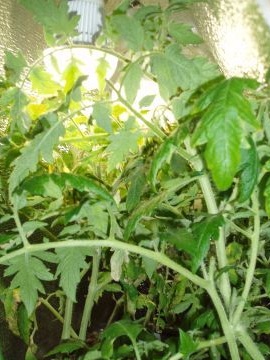
But in fact, tomatoes are a side benefit, so to speak, of the greenhouse that I built in an unnecessary and completely inappropriate place, in a dark corridor, under the stairs. The main purpose of this greenhouse is to grow seedlings of annual onions.
A few years ago, when I decided to grow onions using the annual technology, I needed a place where seedlings could be placed. And there was no free space in the house. In the sense that all window sills were already occupied by other, no less necessary seedlings. It is clear that just in the corner no seedlings will grow. A window is needed, and to the south. And most importantly, I still live in this house both myself and mine homeworkwho are also not enthusiastic about "boxes of land and grass."
I had to search and invent. So I came up with a greenhouse under the stairs. Why there? Yes, I no longer have any heated room, even if it’s dark. I also thought about the basement of the house, but it’s cold there, + 3 ... + 8 nothing will grow, but there’s nothing to heat it.
To implement the idea, the following was required:
1. The old door from the bedside table made of chipboard
2. Two meters of foil isolone 3mm
3. Stapler with staples
4. Wood screws
5. Metal corners 10X10
6. Four ceramic lampholders
7. Socket
8. Wire, electrical tape
9. Electronic daily timer
10. Sprayer for watering plants
First we make an additional outlet for lighting.It’s good that one outlet is already there, because under the stairs I have the old Saratov refrigerator, which is used only in the summer, in addition to the main one.
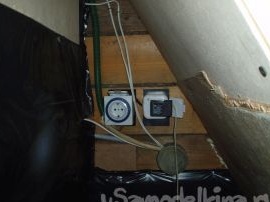
Then from the old door from the bedside table, cut off the shelf for drawers with seedlings to the size and fix it with corners and screws to the wall and stairs.
Sheathed the resulting space with foil isolone using a stapler.

In the upper part of the greenhouse we extend a cord with four cartridges and a fork at the end.

We screw in the backlight and check how they work.
I’ll immediately notice that the use of incandescent lamps in a greenhouse is excluded, because they consume a lot of energy, but give a little light, heat up very much, seedlings die from the heat, and besides, they have a completely different emission spectrum.
As you can see in the photo, at first “energy-saving” lamps of 25 W were used, but they also consumed quite a lot of energy and had a not very good light spectrum.
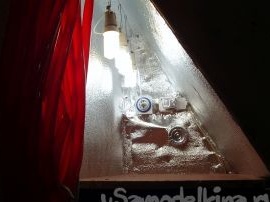
I’ll tell you about how to determine the emission spectrum of a light source and how to make a simple spectrometer myself in another place and at another time, but at the moment I’ll notice that in the end I settled on ASD LED-A60 11W E27 4000K LED lamps
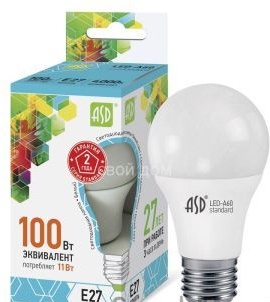
They have an affordable price, good luminous flux, and a radiation spectrum suitable for onion seedlings, with a small drop in the field of green-blue shades.
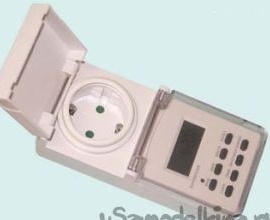
Many may wonder - why do we need a timer here? I answer: for the proper growth of plants you need to provide them with an 18 hour day and 6 hour night.
In the morning I'm leaving for work, and just at that time, the backlight in the greenhouse turns off. At 17 o’clock the timer will turn on the seedlings, and so they will live there until the next morning. If the light is on in the corridor, then it’s more convenient for me personally, if it is on in the dark, I don’t need to turn on the regular light.
And more about the timer. I did not buy it. I got it from a friend of the summer resident, free of charge in a burned out state, I restored it and began to use it with success in the household.
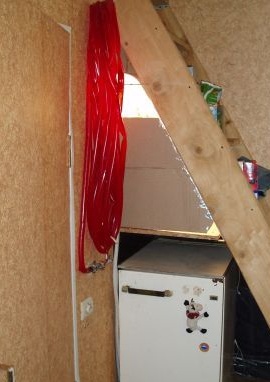

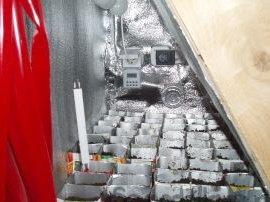
About electricity:
The total power consumed by this greenhouse from the network is 45W.
At a cost of 1 kW hour 2 rubles (this is in our village) and 18-hour use, it turns out about 50 rubles. per month.
About the economy:
For two months I have been growing onion seedlings in this greenhouse with a market value of about 500 rubles. From this seedling in two large beds with one package of fertilizers for 300 rubles you will get about 60 kg of wonderful Siberian onions at an average market price of 22 ... 25 rubles per 1 kg.
Next winter I’ll try to abandon the boxes and hoppers with the ground and grow tomatoes using a new technology, hydroponic, in one large container with a nutrient solution.

